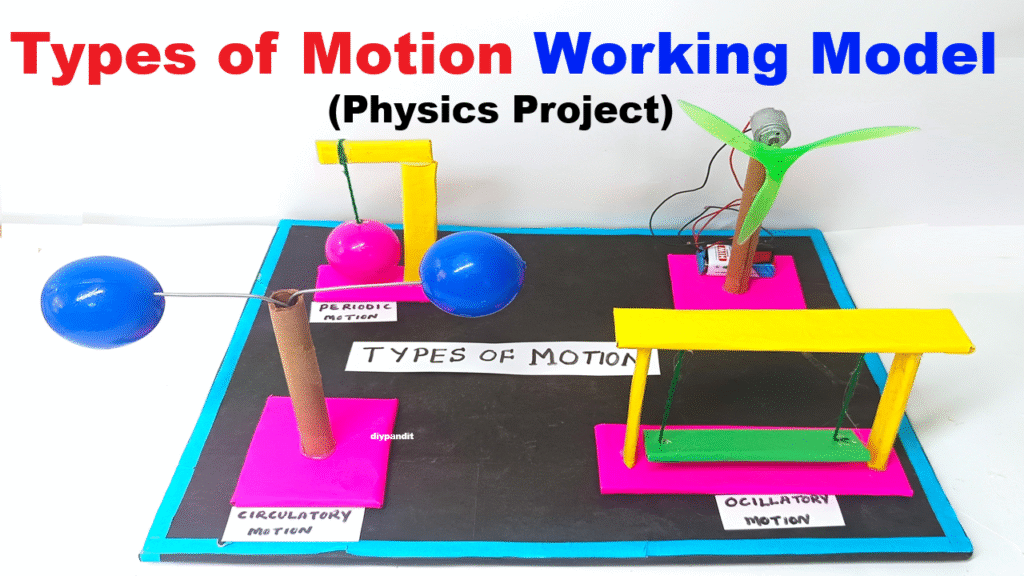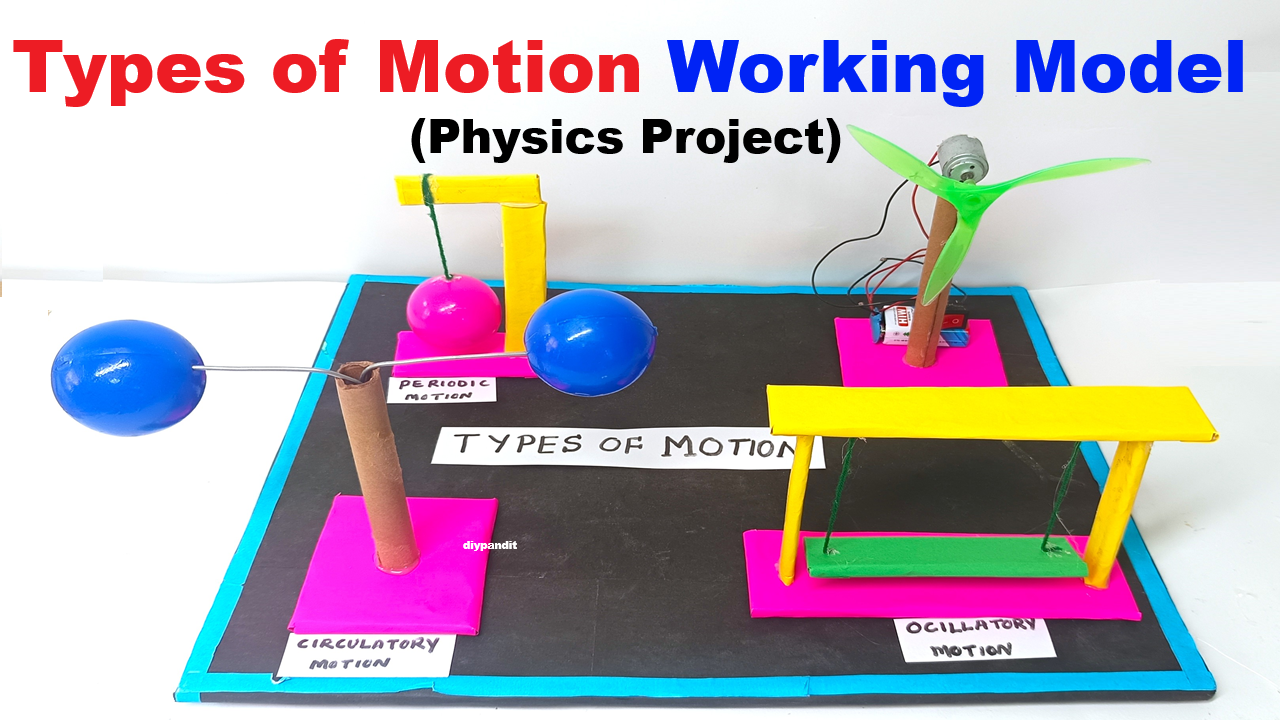Introduction
Motion is a fundamental concept in physics that describes how objects change their position over time. Understanding different types of motion is essential in explaining real-world phenomena. This project demonstrates rotational motion, circular motion, oscillatory motion, and periodic motion using simple DIY setups, making it ideal for a science exhibition.

Types of Motion Demonstrated
1. Rotational Motion
Rotational motion occurs when an object spins around its own axis. In this project, a spinning wheel or a rotating disc is used to show how different points on the object move in circular paths around the center. This helps visualize concepts like angular velocity and rotational inertia.
2. Circular Motion
Circular motion is when an object moves along a circular path around a fixed point. A simple setup using a ball tied to a string demonstrates circular motion. When swung around, the ball continuously changes direction while maintaining a circular trajectory, illustrating centripetal force that keeps it on the path.
3. Oscillatory Motion
Oscillatory motion refers to motion that repeats back and forth around a central point. A pendulum is used to demonstrate oscillatory motion. When displaced from its equilibrium position, the pendulum swings to and fro, showing restoring forces and periodicity.
4. Periodic Motion
Periodic motion is a type of motion that repeats itself at regular time intervals. The pendulum from the oscillatory motion also demonstrates periodic motion, as the time for one complete swing (back and forth) is constant, called the time period. Similarly, a rotating wheel with marks can show how motion repeats after each rotation.
Video Steps Working Model
- Rotational motion: Spinning objects demonstrate rotation around an axis.
- Circular motion: Objects tied to a string illustrate motion around a center point and the role of centripetal force.
- Oscillatory motion: Pendulums display repetitive back-and-forth motion due to restoring forces.
- Periodic motion: Repetition over time is shown using the pendulum or rotating wheel, highlighting time periods.
Conclusion
This project provides a hands-on understanding of different types of motion. By using simple materials like a wheel, string, and pendulum, students can visualize rotational, circular, oscillatory, and periodic motion effectively. It helps in connecting theoretical concepts of physics with practical observation, making it ideal for science exhibitions and classroom demonstrations.

